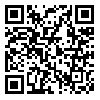BibTeX | RIS | EndNote | Medlars | ProCite | Reference Manager | RefWorks
Send citation to:
URL: http://refahj.uswr.ac.ir/article-1-1839-en.html
Objectives: Incest exists everywhere, be it developed contry or developing country. It exists in Iran as well. But the main difference is that although there are many researches and voices in this regard in the developed countries, there is an overarching silence on this topic in Iran, which can be sensed by lack of research in this regard. Therefore, the idea can be vastly heared that the risk of being incested is much more stronger when one is off insiders’ or family members’ hands. The existing evidences show that this idea is really false. With this in mind, this paper tries to study incest, its grounds, aggressors’ strategies, and responses of victims.
Method: This paper use qualitative approach and particularly ethnographic method. The data was collected through deep interview, documents, observation, and questionnaire. The paper studies a sample containing 39 women and girls who forced to incest with their own brothers or fathers.
Findings: The results show that incest is not so much a mental problem as a social one, which has its origins mostly in patriarchy and power relations in family as well as the dominance of idea of ownership righ in parents/cheilderen relations. Based on the data collected, this paper classifies aggressors’ strategies in four categories: 1) the strategy of phisical compulsion and violence; 2) the strategy of emotional stimulation and sentimental threat; 3) economic strategy; and 4) fradulent strategy. Also, it recogonizes four categories of victims’ responses: 1) silence option; 2) resistance option; 3) voice option; and 4) exit option. Accordingly, the findings show that it is more probable to resort to voice option and active response if victims have more social networks and supports, and vice versa.
Results: show that incest is not so much a mental problem as a social one, which has its origins mostly in patriarchy and power relations in family as well as the dominance of idea of ownership righ in parents/cheilderen relations. Based on the data collected, this paper classifies aggressors’ strategies in four categories: 1) the strategy of phisical compulsion and violence; 2) the strategy of emotional stimulation and sentimental threat; 3) economic strategy; and 4) fradulent strategy. Also, it recogonizes four categories of victims’ responses: 1) silence option; 2) resistance option; 3) voice option; and 4) exit option. Accordingly, the findings show that it is more probable to resort to voice option and active response if victims have more social networks and supports, and vice versa.
Received: 2015/08/21 | Accepted: 2015/08/21 | Published: 2015/08/21
| Rights and permissions | |
 |
This work is licensed under a Creative Commons Attribution-NonCommercial 4.0 International License. |





